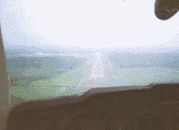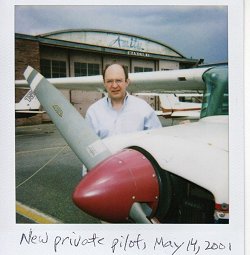
Finally Flying Singer gained his Private Pilot licence
Dual cross-country -
I flew several of these medium-length flights (over 50 nm from home), requiring detailed flight planning, weather briefings, flight plans, careful navigation, and ATC flight-following.
The first was Worcester (ORH) to Pittsfield, MA.
The second was in Los Angeles, California, from El Monte (EMT) to French Valley (small desert airport, F70) to Chino (my namesake, CNO) and back to El Monte.
The third was a rehearsal for the solo, ORH to Concord, NH (CON) and back on January 2, 2001 - the snow-covered terrain was beautiful on this sunny winter day.
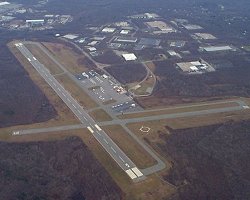
I did two of these ORH-CON solo x/c flights.
The first one was "the" solo x/c, January 22 and it went well except for the part where I busted Manchester's Class C airspace (preoccupied with avoiding some clouds, I waited too long to call them up for flight following from CON back to ORH and was already in their airspace when I contacted them - bad move, but I said I was sorry and will NEVER do THAT again).
This is a serious thing, and I could have gotten into trouble over it if the controller had not been so understanding of my student status!
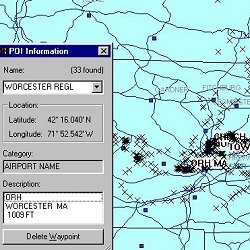
Mr .7777
The second ORH-CON solo x/c was PLANNED to be my LONG solo cross country, ORH-CON-SFM-ORH (Sanford, Maine), but I ran into some trouble around Manchester, and this time it wasn't my fault!
When I contacted MHT for flight following, they gave me a transponder squawk code, and I read it back and dialed it in as normal. But when MHT called me back, they said was squawking 7777, one of the forbidden codes (used by military interceptors - the C152 doesn't qualify!). My XPDR was broken and transmitting the wrong code!
Before I had decided what to do about this, I noticed that the attitude indicator was showing a steep descending left turn while I was straight and level. My vacuum pump had failed, so the directional gyro was also bad (apparently 7777 is not my lucky number). I landed at Concord and called Amity. They told me to fly the airplane back to ORH, swinging west to avoid MHT's Class C airspace (no need for XPDR in that case). It was a clear VFR day and I flew home without further trouble (mainly using the magnetic compass and visual references).
I noticed that the attitude indicator was showing a steep descending left turn while I was straight and level.
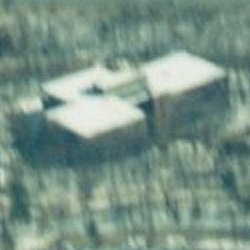
FlyingSinger's office building
Night Moves
Although I had flown one local night flight to practice landings, I had trouble getting the rest of the requirements done.
Winter weather and schedule conflicts kept delaying my night flights at ORH (one flight was to be yet another dual x/c to CON, but at night - all required night work for the private pilot rating is dual). Finally I had a business trip to Los Angeles and decided to try some night moves out there.
I scheduled a night x/c with a CFI from Chino (CNO) to Palm Springs (PSP) and back. The combination of night flying, unfamiliar terrain, new glasses, and heavy ATC comms was bit overwhelming, but the CFI helped me out and it went OK. I followed the I-10 Freeway through the Banning Pass into PSP, steering well clear of the 10,000 foot mountain to my right and the 6,000 footer to me left.
On the same trip, I also scheduled a night-landing session at El Monte (EMT), completing my 10 required night landings (all to a full stop). Around this time I also took the FAA knowledge exam (still called "the written" even though it's done on a computer). I had studied a lot and got 98% on the test (one wrong out of 60 questions).
I had prepared mainly by self-study (various books and the Jeppesen FliteSchool CD-ROM course).
Long solo cross country
I finally did the long cross-country on April 10, 2001, and it was pretty uneventful, though I did spend a good 10 minutes circling about 10 miles west of Sanford while I decided which runway to use and how to enter the pattern for it (there was conflicting info on the radio for this uncontrolled airport that I had never visited - two runways in use, and I thought at first that one of them was right traffic - I stayed a safe distance away while I sorted it out).
The view of the Maine seacoast was magnificent.
Check ride prep time
With all my requirements out of the way, I began to study and practice for the check ride with a DE (designated examiner).
I scheduled it with Ray Collins, a captain for Continental Airlines. There wasn't too much information on what he was like since most students at Amity flew their check rides with a different DE up at MHT. But I figured, if I'm ready, I'm ready for anyone, and I wanted to get it done while I was "fresh" from my practice flights and before a planned trip to Germany
Ray wanted me to meet him at North Central Rhode Island Airport (SFZ), so I flew down there a couple of times in the days before to check out the area and get used to landing there in gusty spring-weather conditions. He assigned a cross-country to plan (SFZ to Lebanon, NH), and May 14 was to be the day.
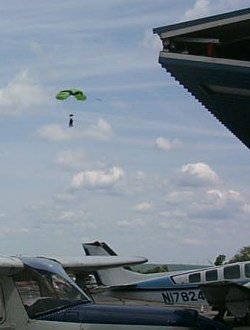
The Big Day (May 14, 2001
I got a late start this morning due to my flight instructor remembering something at the last minute.
I flew N4669L (considered the "best" of the three C152's) down from Worcester to Pawtucket (SFZ, North Central RI Airport, about a 20 minute flight from Worcester, barely north of the PVD Class C) just in time for my 9 am appointment with the DE, Ray Collins.
The paperwork and oral part of the exam went very well, with a lot of emphasis on runway incursions, airspace questions, aircraft systems, etc and not much on regulations. I was pretty solid on that stuff.
But I was worried about the flight test part because the air was very bumpy and I was getting bounced all around on the way down (plus my practice in similar conditions the last few days had not really been my best flying). Examiners must understand this and I guess I did OK after all. He didn't ask me to do as many maneuvers or landings (just 3) as I expected, but I'm not complaining (I think he had an appointment or something - he seemed a bit rushed).
One interesting distraction was some sky divers jumping over the airport from 10,000 feet - about 6 of them came down as I was doing my first time around the pattern -- I was concerned, but they can steer around the airplanes, and there was nothing I could do but keep my eyes open anyway.
The instrument part of the test (with foggles) was pretty hard due to all the bouncing around from the turbulence -- I had plus or minus 200 feet to play with in altitude, and I think I used most of it! He didn't have me do a simulated engine-out emergency which was surprising. Did the first two check points of the planned x-country (to LEB, NH). Slow flight, stalls, VOR work.
No ground reference, no steep turn. Strange. I was ready for all of it and did what was asked.
The final landing was on a different runway, with a gusty cross-wind. My approach was also a little low, and I made a last-second correction but held the centerline pretty well. The DE said "you just caught that one." I turned off at the first taxiway, and he said, "well, you're a private pilot." He didn't say "good job" or anything and I didn't feel it was a great job. He said "it was pretty bumpy up there, but you have to fly with what you get - if you only fly on smooth days around here you won't fly much."
When we walked in the FBO, I was surprised to find my brother there waiting in the office - he took some digital camera pix (he and the wife conspired to say he was in Pennsylvania this week so I never expected him to be in RI). I spent a few more minutes with the DE - a little debrief, some advice, write out the temporary airman's certificate, handshake. Then he was gone and I talked with my brother for a while.
The flight back to Worcester was REALLY bumpy, and I even flew through a brief rain shower. I'm glad I didn't stay later since the clouds were getting lower and winds picking up (even though I had to pass on lunch with my brother).
That's my story! This just goes to show that if you keep your childhood dream for, oh I don't know, 35 years or so, it may eventually come true! I'm actually a private pilot now -- whoa. Does the FAA know about this? Yup, they do!
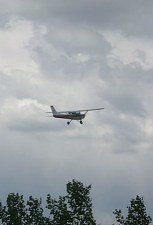
Stats
I started "serious" flight lessons in June 2000 (after three years of false starts that totaled only 18 hours of dual).
I had about 88 hours total, of which 70 were flown from June 4, 2000 to May 14, 2001. I flew 24 hours solo (first solo was July 29, 2000). I spent about $6500 on the lessons - probably closer to $7000 when you add in miscellaneous things like the FAA written ($70) and the check ride fee ($200) and GPS ($200) and other odds and ends. I don't count the books, magazines, and sims since I would have bought them anyway.
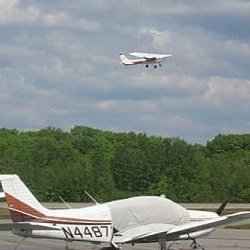
Mistakes
Things went well for the most part. I was happy with my CFI, but also happy that I flew a bit with several other CFI's along the way (I learned something new and useful from every CFI I flew with).
There are a few things I wish I had done differently - here are a few examples off the top of my head, in hopes that others will learn from my mistakes:
Light touch and trim - I wish my CFI's had insisted that I fly with only two fingers on the yoke and learned to use trim more precisely. The C152 has such light control forces that this isn't a big problem, but other planes demand a lighter touch, and I'll have to work on it.
I'm still amazed at the great effects even tiny changes in yoke or nose position can make on performance - it's less "yank and bank" than "pull back a few millimeters."
Lesson frequency - I wish I had somehow managed to schedule the lessons at more regular and shorter intervals (like twice a week). Family demands and business travel prevented this, but this slowed my progress, I'm sure.
Reviewing my detailed flight notes helped me to catch up when I had a couple of weeks away from flying (I'm glad I kept these notes, only a small part of which have been posted here since they really apply most of all to me).
Flight sim side-effects - There were good and bad side effects from years of sim use. On the good side, familiarity with terminology, procedures, and instruments was helpful. I also rehearsed some of my x/c and instrument/VOR flights using FLY! and scenery from TerraScene.
On the bad side, I am TOO instrument-oriented and don't make use of outside pitch references as much as I should. This is partly from sims and it's a hard habit to break. You should insist that your CFI cover up some instruments quite often and really enforce flying by outside pitch references.
Prepare more for each flight - I've read that military student pilots do 4 or more hours of preparation for each hour in the air. On those flights where I explicitly prepared (studied the procedures, practiced on a sim, did some "chair flying", planned a cross-country), I did better and got more out of the flight. Sometimes I was just too busy, but I should have done more.
I'm still amazed at the great effects even tiny changes in yoke or nose position can make on performance - it's less "yank and bank" than "pull back a few millimeters.
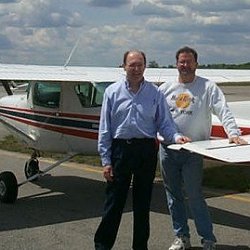
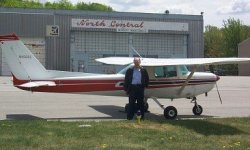
Conclusions
In spite of all this (and more I've forgotten, I'm sure), taking flight lessons has been one of the best things I've ever done. It has given me a tremendous feeling of accomplishment to have reached this point, even while recognizing that I still have a lot to learn.
I've always enjoyed learning new things and challenging my mind and body to do things that don't seem especially easy or natural - it was actually fun to be a student again, to be so awkward at first and to overcome the fact that I'm by no means a natural pilot or even especially coordinated or observant.
Sometimes this was frustrating, but I kept my sense of humor and confessed to my limitations and got help when I needed it. Flying truly teaches you to look at things from new perspectives - and not only from the obvious ones like "high up." I highly recommend it!
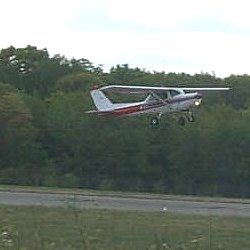
Back to Worcester

